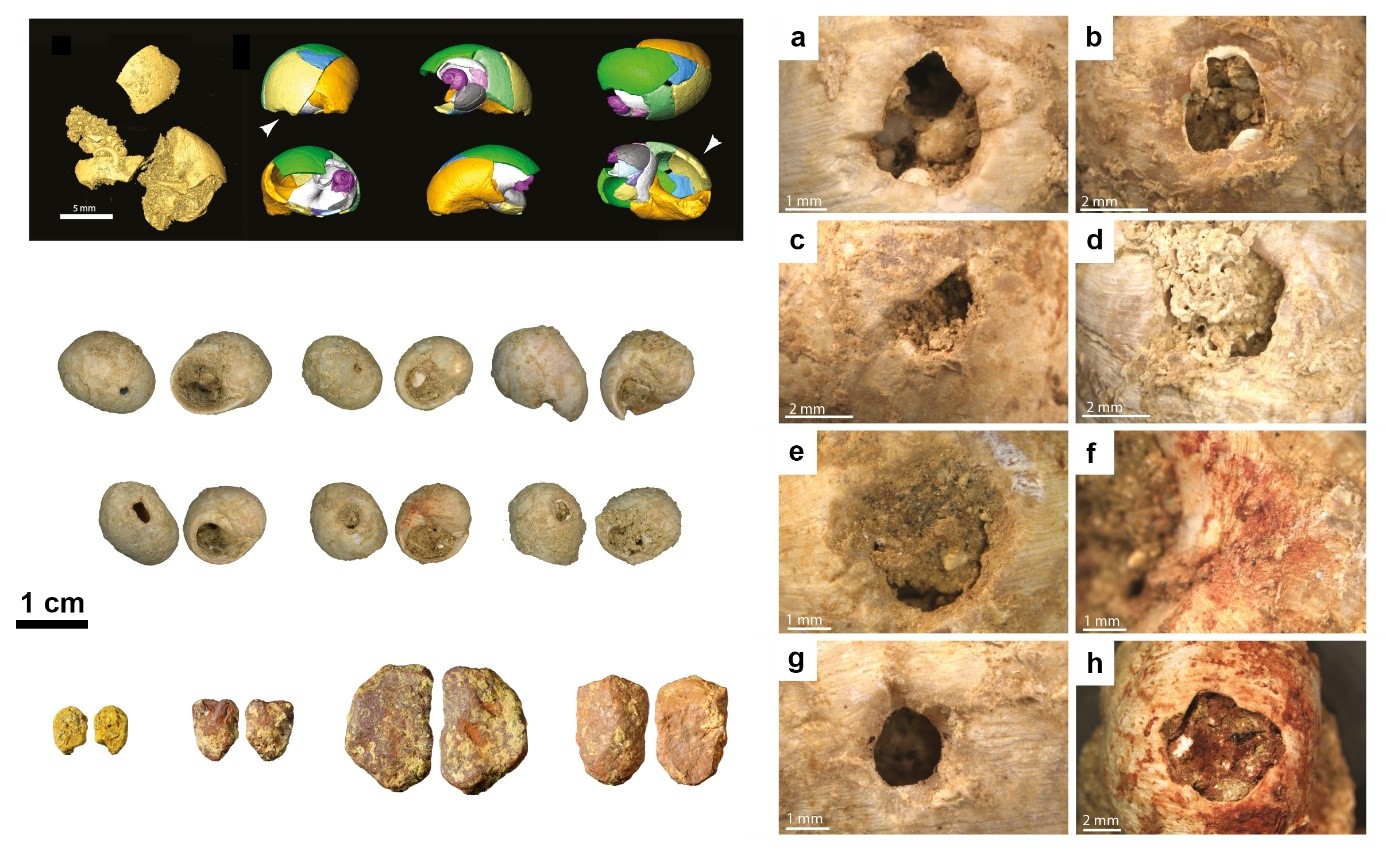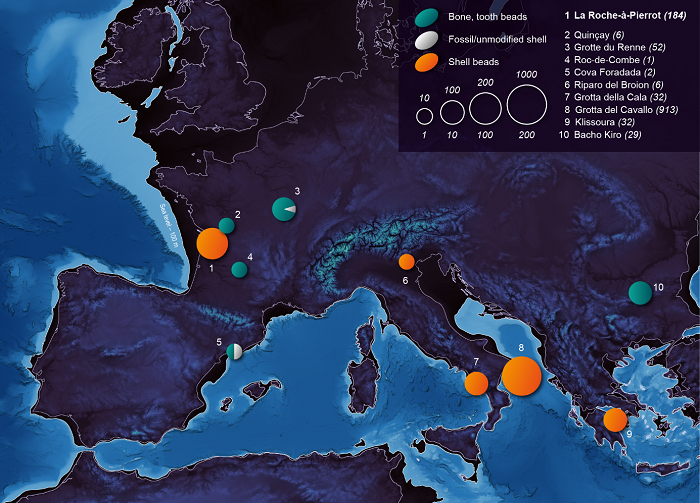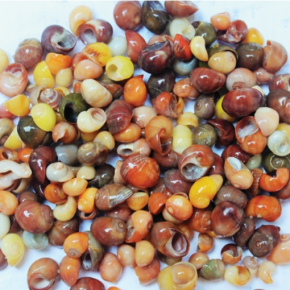
The oldest shell jewellery workshop in Western Europe
|
The oldest workshop for making shell jewellery has been unearthed at the Palaeolithic site of La Roche-à-Pierrot in Saint-Césaire, Charente-Maritime. Dating back at least 42,000 years and accompanied by red and yellow pigments, this unique assemblage in Western Europe has been linked to the Châtelperronian culture, which marks the transition between the last Neanderthals and the arrival of Homo sapiens in Europe. The study, conducted primarily by scientists from the CNRS, the l’université de Bordeaux, the ministère de la Culture and l’Université Toulouse 2 Jean Jaurès, is published in the journal Proceedings of the National Academy of Sciences. This major discovery allows us to discuss the mobility of prehistoric populations and possible contact between different human groups during this significant period of prehistory.
Between 55,000 and 42,000 years ago, Europe underwent a profound transformation, with the last Neanderthals being gradually replaced by groups of Homo sapiens arriving during their most recent migration out of Africa. The Châtelperronian, a prehistoric culture attested in France and northern Spain during this period, occupies a central place in research. Recognised as one of the earliest industries of the Upper Palaeolithic in Eurasia, the identity of its artisans – Neanderthals or Homo sapiens – remains a matter of debate.
During new excavations at La Roche-à-Pierrot, conducted by scientists working at the De la Préhistoire à l'actuel: culture, environnement et anthropologie laboratory (CNRS/Ministère de la culture/Université de Bordeaux), the research team uncovered pierced shells and numerous pigments attributable to the Châtelperronian period. The absence of wear marks on some of the perforations and the presence of unpierced shells indicated that this was a genuine workshop for the manufacture of jewellery. Analyses revealed that these shells came from the Atlantic coast, at that time located about 100 kilometres away, while the pigments came from an area more than 40 kilometres away, providing evidence of long-distance trade networks or significant human mobility. Other remains found at the site include typical Neanderthal tools and the remains of hunted animals (bison, horses), highlighting the diversity and complexity of human occupation at that time.
These exceptional discoveries mark the first documented instance of an early Upper Palaeolithic industry and associated shell beads in Western Europe1 . The jewellery and pigments identified bear witness to the explosion of symbolic expression during this period – marked by practices of ornamentation, social differentiation and identity affirmation – most generally associated with Homo sapiens. They also shed new light on the cultural variability of the time, suggesting that the Châtelperronian people were influenced by, or even belonged to, an early wave of Homo sapiens who arrived in the region at least 42,000 years ago.
Occupied by various human groups for nearly 30,000 years, Saint-Césaire remains a unique laboratory for understanding the dynamics of prehistoric settlements and the interactions between Neanderthals and Homo sapiens. Since 1976, excavations at this site have continued to yield valuable information, not least due to the revision of old collections and new methods of analysis and excavation implemented since 2013.
Eleven laboratories participated in this study under the supervision of the CNRS:
The Musée national de Préhistoire contributes to this initiative through the participation of Brad Gravina affiliated to the ministère de la Culture, curator responsible for the Early and Middle Paleolithic collections. |

Bottom left: Red and yellow pigments from the same area.
Right: Microscopic views of the modifications observed on Littorina obtusata: perforations made by pressure (a-e, g, h), pigment staining (f, h).
© S. Rigaud & L. Dayet


Centre: Reference collection of Littorina obtusata collected from the thanatocoenosis on 8th October 2016.
Right: Colour variability of L. obtusata.
© S. Rigaud
- 1Only excavations carried out in South Eastern Europe and around the Mediterranean had previously yielded this type of shell jewellery.
Châtelperronian cultural diversity at its western limits: Shell beads and pigments from La Roche-à-Pierrot, Saint-Césaire.
Bachellerie F., Gravina B., Rigaud S., Dayet L., Thomas M., Lebreton L., Morin E., Lesage C., Falguères C., Bard E., Bahain J.-J., Baillet M., Beauval C., Bordes J.-G., Culioli G., Devièse T., Flas D., Garbé L., Guérin G., Lacrampe-Cuyaubère F., Lahaye C., Mallol C., Marot J., Maureille B., Michel A., Muth X., Regniers O., Tartar E., Teyssandier N., Thibeault A., Todisco D., Tombret O., Rougier H. & Crevecoeur I. Châtelperronian cultural diversity at its western limits: Shell beads and pigments from La Roche-à-Pierrot, Saint-Césaire Proc Natl Acad Sci U S A. In press, Proceedings of the National Academy of Sciences, w/c 22nd September 2025.

